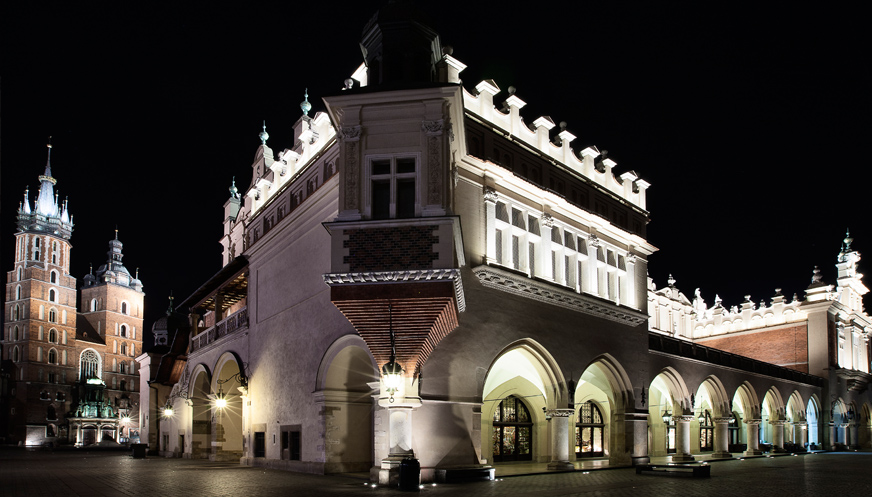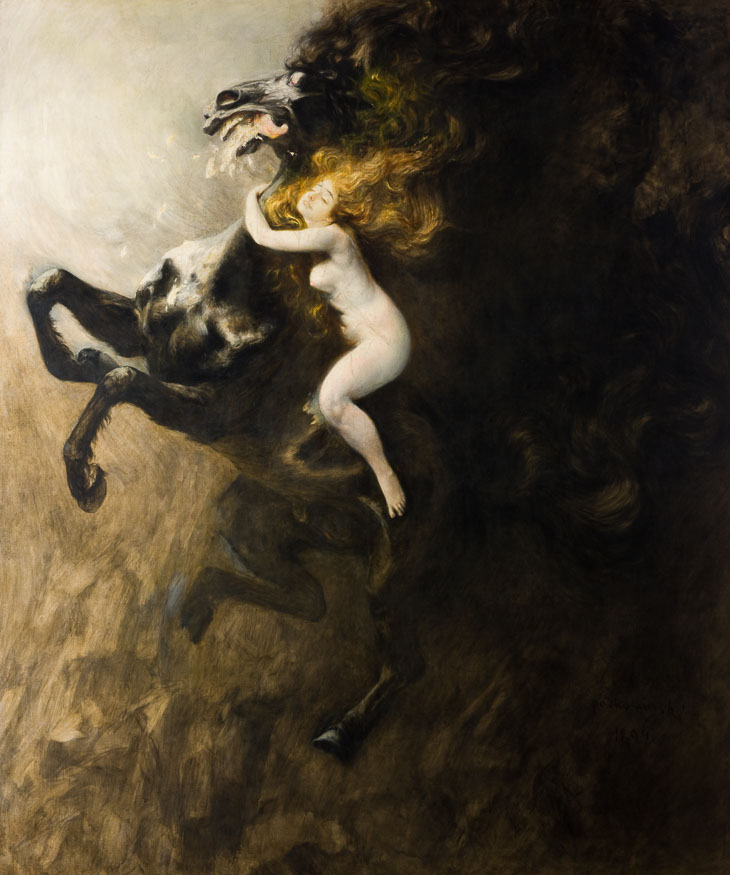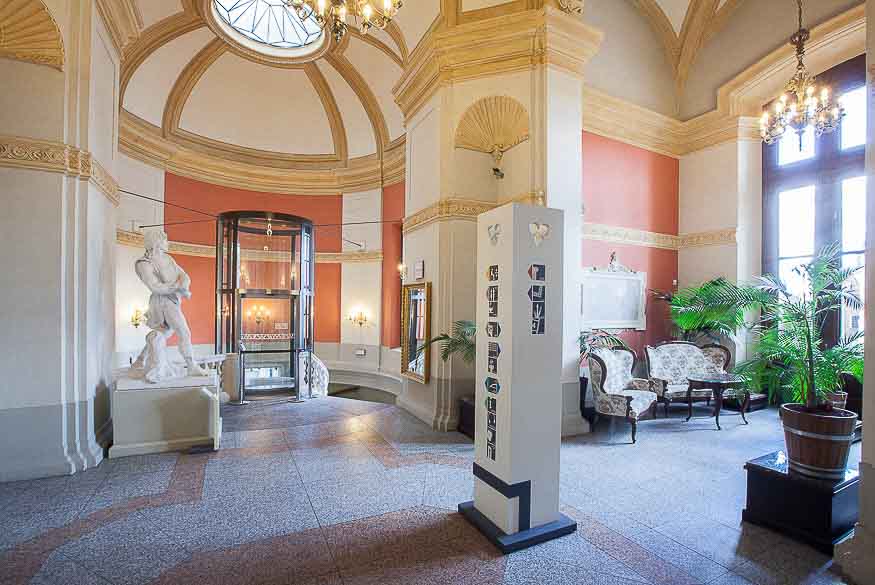Tuesday is the day of free entry to permanent exhibitions at the NMK.
The museum is closed on Mondays.
On April 24, 2024, the Polish Art Gallery will be open until 16:00.
The museum is closed on Mondays.
On April 24, 2024, the Polish Art Gallery will be open until 16:00.
The Chełmoński Room
Realism, Polish Impressionism, Beginnings of Symbolism
This room presents the most important phenomena in Polish painting of the second half of of the 19th century, particularly with reference to movements such as Realism and Naturalism, Impressionism and the beginnings of Symbolist painting. A shift towards Realism was aimed at conveying the forms and phenomena observed in nature without stylising and idealising. The criterion of beauty was replaced by the criteria of truth and objectivity. Preference was given to contemporary topics and an ordinary man became the key character.
Polish art did not develop evenly: Warsaw and Krakow centres were of particular importance, though the key feature of this period was the development of Polish art beyond its borders (the most important artistic colony was located in Munich, and since the 1890s, there was a growing interest in Parisian circles).
The circle of Munich-based artists gave birth to the Polish landscape and genre school, which functioned outside the annexed territories and combined the inspiration with works by the 17th-century Dutch masters, the French Barbizon School and Gustave Courbet with the latest trends in Munich painting. Battle and oriental trends as well as genre themes depicting everyday life of landed gentry and city folks, peasants and national minorities were still popular. Interest in the people evolved from portrayals in the spirit of social criticism, through picturesque genre painting or dispassionate observation bordering on naturalism, to the depictions of a more symbolic nature. Portrait painting lost its character of a conventional official image in favour of an intimate, psychologically deepened depiction.
Since the 1880s, realistic tendencies became intertwined with new impressionistic or symbolic trends. Polish Impressionism constituted only a partial adaptation of the French movement: artists combined Realism with certain elements of impressionist depictions.
The unique symbiosis of Impressionism and Symbolism was accompanied by works combining the latter with the aesthetics of Expressionism (Ecstasy by e.g. by Władysław Podkowiński). The attitude adopted by Polish art at the end of the century is accurately reflected e.g. in Jacek Malczewski's work. His painting titled Introduction closes the exhibition in the Sukiennice, at the same time introducing the viewer to the themes present in the Gallery of 20th-Century Polish Art in the Main Building of the National Museum in Krakow.
Text by Aleksandra Krypczyk




